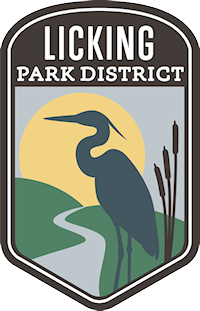A Tale of Two Crayfish Species: Research at the Licking Park District
 GRANVILLE, OHIO (April 5, 2021) The Licking Park District actively supports research that informs the management of our natural resources. Invasive species, and the detrimental impact they have on native species, are of particular concern. In 2020, The Ohio State University graduate student Krystal Pocock collected native crayfish from Lobdell Reserve as part of a larger project examining differences in leaf consumption by crayfish in Ohio. Crayfish are important to stream systems as they break down nutrient rich, coarse leaf litter. However, research has suggested streams with non-native crayfish have accelerated leaf litter breakdown and reduced standing leaf litter. This reduces available habitat and food for fish and aquatic macroinvertebrates and may lead to reduced biodiversity.
GRANVILLE, OHIO (April 5, 2021) The Licking Park District actively supports research that informs the management of our natural resources. Invasive species, and the detrimental impact they have on native species, are of particular concern. In 2020, The Ohio State University graduate student Krystal Pocock collected native crayfish from Lobdell Reserve as part of a larger project examining differences in leaf consumption by crayfish in Ohio. Crayfish are important to stream systems as they break down nutrient rich, coarse leaf litter. However, research has suggested streams with non-native crayfish have accelerated leaf litter breakdown and reduced standing leaf litter. This reduces available habitat and food for fish and aquatic macroinvertebrates and may lead to reduced biodiversity.
Two crayfish species were the focus of Pocock’s research: the native Sanborn crayfish, Faxonius sanbornii, and the invasive Rusty crayfish, Faxonius rusticus. The Rusty crayfish is a large, aggressive species whose range is rapidly expanding. Pocock conducted behavioral experiments to evaluate leaf consumption between species to determine if sites containing Rusty crayfish exhibited higher leaf decomposition rates. Results revealed that there was no difference in the dry mass of leaf material consumed between Rusty and Sanborn crayfish, however there was a significant interaction between experimental treatments and species, suggesting that Rusty crayfish could be having direct and/or indirect effects on macroinvertebrates when present. Pocock noted additional experiments should be aimed at understanding trophic dynamics in Ohio streams containing Rusty crayfish to determine the effect that this species has on ecosystem functions and determine successful management of this invasive species.
Licking Park District’s Mission
The mission of the Licking Park District (LPD) is to acquire, manage, preserve, and conserve natural areas within Licking County, while protecting wildlife and local history in a manner that enriches our communities and provides access to diverse parks, educational opportunities, and health and wellness activities.
The Licking Park District manages over 1,600 acres of parkland on 12 sites and manages over 46 miles of paved multi-use trails across Licking County. The Licking Park District office, located at Infirmary Mound Park, is easily accessed from Rt. 37. Visit the website www.lickingparkdistrict.com to see all the programs and opportunities your Licking Park District offers or contact us at 740.587.2535 or by email at: Info@LickingParkDistrict.com
